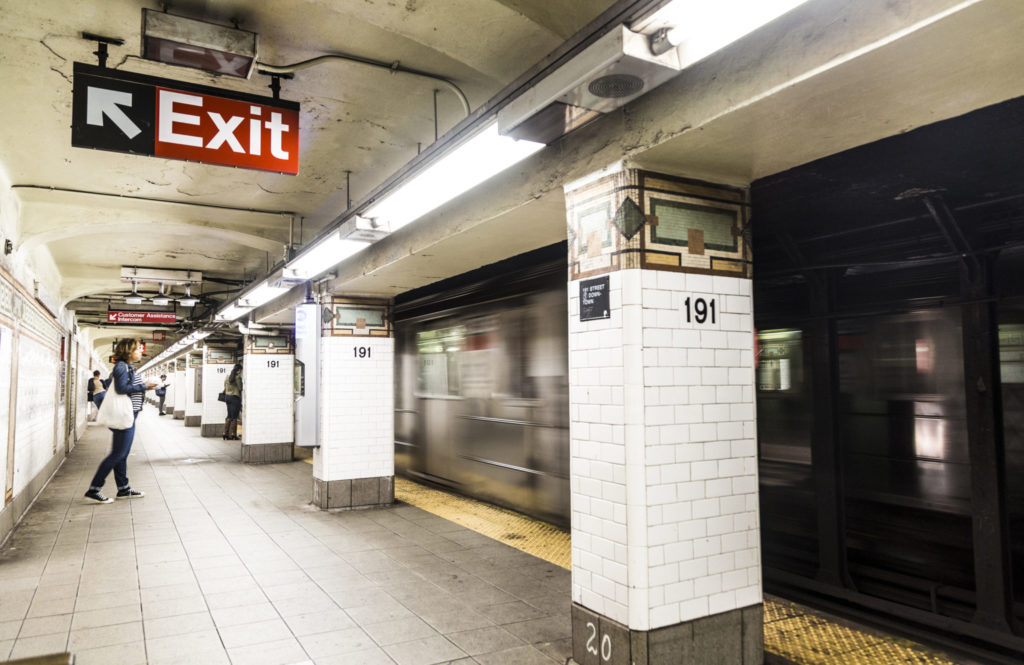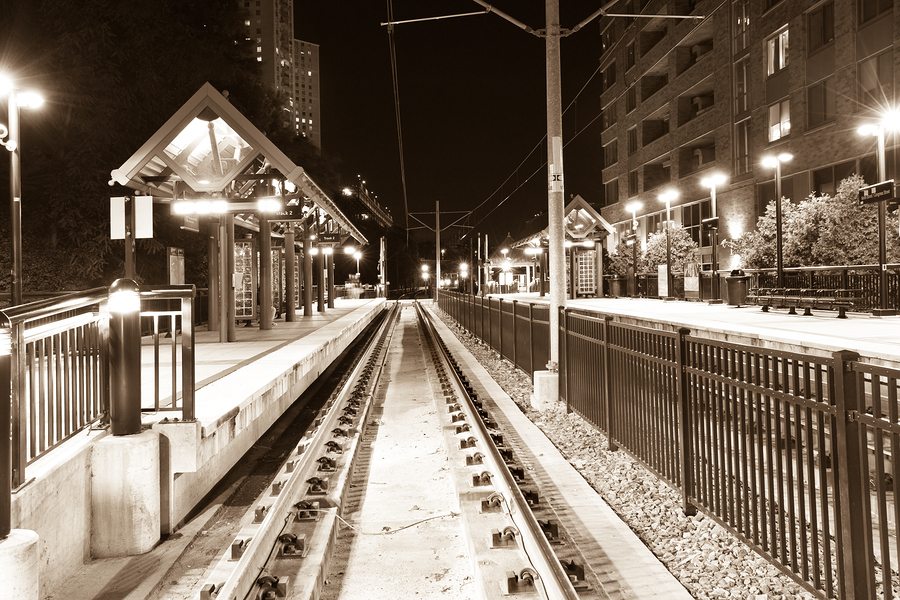MTA subway lines carry more than a billion passengers each year, including more than five million on the average weekday. Without subway transit, New York City would screech to a halt. However, while public transportation is vital for millions of students and commuters, it can also be very dangerous – especially at certain stations, or on certain lines. Our Queens MTA subway accident lawyers count down nine of the most dangerous subway stops and train lines in New York.
Which MTA Subway Stops and Lines Have the Most Crime?

As older residents know first-hand, New York City has become much safer over the past several decades, transforming from a notorious hotbed of crime during the 1970s to the family-friendly travel destination the world recognizes today. However, while the city has made massive strides in terms of general public safety, there are still dangers for residents and visitors – particularly when riding the subway.
In 2013, NY Daily News evaluated crime data from July 2008 through June 2013 to determine the most dangerous subway lines and stations during the same time period. Based on which trains had the highest crime rate per every 100,000 trips, the top nine most dangerous subway lines were:
- Forest Hills/71st Avenue Station (IND Queens Boulevard Line) – E, F, M, R train
Misdemeanor Sex Crimes – 0.25 per 100,000 trips - 149th Street/Grand Concourse Station (IRT Jerome Avenue Line/IRT White Plains Road Line) – 2, 4, 5 train
Violent Crimes – 0.38 per 100,000 trips - Cathedral Parkway/110th Street Station (IRT Broadway/7th Avenue Line) – B, C train
Drug Crimes – 0.69 per 100,000 trips - Chauncey Street (BMT Jamaica Line) – J, Z train
Weapons Possession – 0.73 per 100,000 trips - 116th Street Station (IND 8th Avenue Line) – B, C train
Drug Crimes – 0.86 per 100,000 trips - Beach 44th Street Station (IND Rockaway Line) – A train
Property Crimes – 2.68 per 100,000 trips - Beach 105th Street Station (IND Rockaway Line) – A, S train
Misdemeanor Sex Crimes – 0.57 per 100,000 trips
Property Crimes – 2.27 per 100,000 trips - Broadway Junction Station (BMT Canarsie Line/BMT Jamaica Line/IND Fulton Street Line) – A, C, J, L, Z train
Violent Crimes – 0.79 per 100,000 trips
Weapons Possession – 2.24 per 100,000 trips - Broad Channel Station (IND Rockaway Line) – A, S train
Drug Crimes – 1.22 per 100,000 trips
Misdemeanor Sex Crimes – 0.98 per 100,000 trips
Property Crimes – 9.05 per 100,000 trips
Violent Crimes – 3.42 per 100,000 trips
Weapons Possession – 3.67 per 100,000 trips
Queens Subway Stations Rank Worst in NYC for Structural Safety

Measuring the amount of crime that occurs is only one way to assess the danger of a given subway line or station. Structural problems can also create danger.
In September 2015, the New York Citizens Budget Commission (NYCBC) – a non-profit, Manhattan-based organization “whose mission is to achieve constructive change in the finances and services of New York City” – unveiled a subway report that focused not on crime data, but the structural integrity of features like stairs and platform edges. When these components are damaged, weakened, or otherwise in need of repairs, there’s a greater risk of a slip and fall accident or other type of accident resulting in injury or wrongful death.
Unfortunately, the NYCBC report found that subway stations in Queens were some of the city’s worst in terms of structural integrity and overall maintenance. According to the press release issued with the report, “The report identifies the 33 stations in worst condition; they have more than half of their structural components not in a state of good repair. About half of the 33 stations are in Queens, including seven of the 10 worst stations.” These stations include:
- 52nd Street Station
Trains – 7
Structural Components in Poor Repair – 23 out of 29 (79%)
- 85th Street/Forest Parkway Station
Trains – J
Structural Components in Poor Repair – 14 out of 19 (74%)
- 30th Avenue Station
Trains – N, Q
Structural Components in Poor Repair – 18 out of 25 (72%)
- 103rd Street/Corona Plaza Station
Trains – 7
Structural Components in Poor Repair – 17 out of 25 (68%)
- 36th Avenue Station
Trains – N, Q
Structural Components in Poor Repair – 16 out of 24 (67%)
- Woodhaven Boulevard Station
Trains – J, Z
Structural Components in Poor Repair – 18 out of 27 (67%)
- Astoria Boulevard Station
Trains – N, Q
Structural Components in Poor Repair – 21 out of 32 (67%)
- 111th Street Station
Trains – 7
Structural Components in Poor Repair – 19 out of 29 (66%)
- Woodside/61st Street Station
Trains – 7
Structural Components in Poor Repair – 18 out of 28 (64%)
- 39th Avenue Station
Trains – N, Q
Structural Components in Poor Repair – 14 out of 22 (64%)
- 75th Street/Elderts Lane Station
Trains – J, Z
Structural Components in Poor Repair – 12 out of 19 (63%)
- 82nd Street/Jackson Heights Station
Trains – 7
Structural Components in Poor Repair – 14 out of 24 (58%)
- Aqueduct Racetrack Station
Trains – A
Structural Components in Poor Repair – 5 out of 9 (56%)
- Broadway Station
Trains – N, Q
Structural Components in Poor Repair – 12 out of 22 (55%)
- 69th Street Station
Trains – 7
Structural Components in Poor Repair – 12 out of 23 (52%)
Queens MTA Injury Lawyers Handling Bus and Train Accident Claims
Whether they’re locals or visitors, all travelers should feel safe in the NYC subway system. Unfortunately, whether it’s due to high crime rates or poor station maintenance, many train lines and subway stops can be very dangerous.
If you or one of your loved ones suffered an injury while riding an MTA train or waiting at an MTA subway station, you may be able to get compensated for your losses. With extensive experience handling personal injury claims related to bus and subway accidents in Queens and throughout New York City, the MTA bus accident lawyers of Sullivan & Galleshaw may be able to help. To talk about your MTA accident claim in a free and confidential legal consultation, call the law offices of Sullivan & Galleshaw at (718) 843-0300.